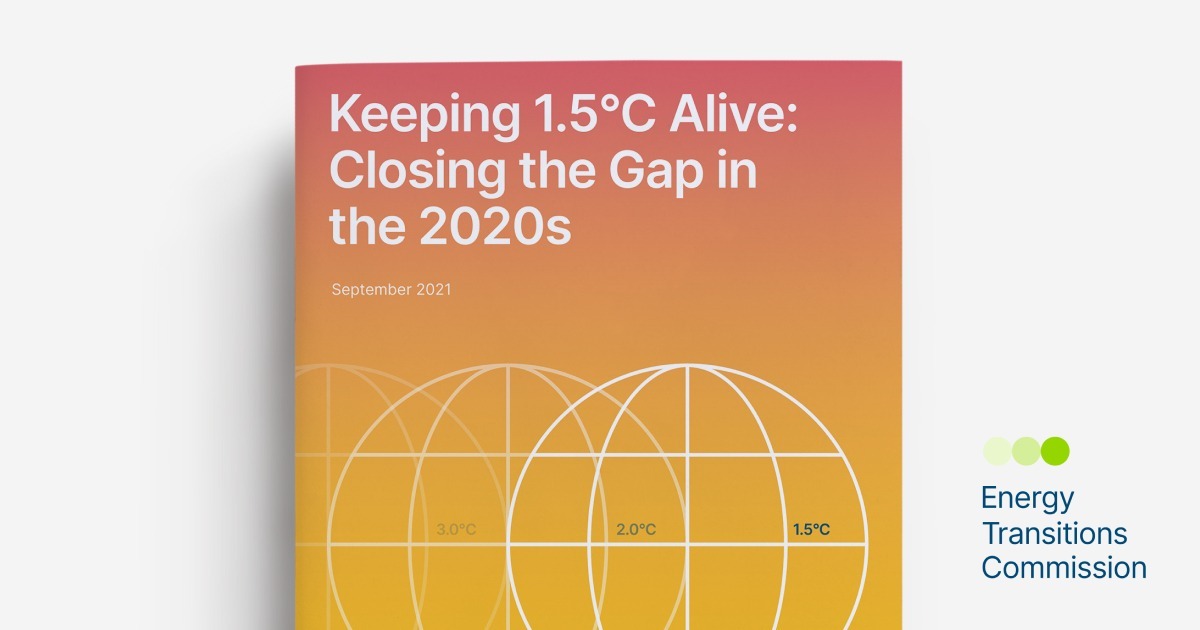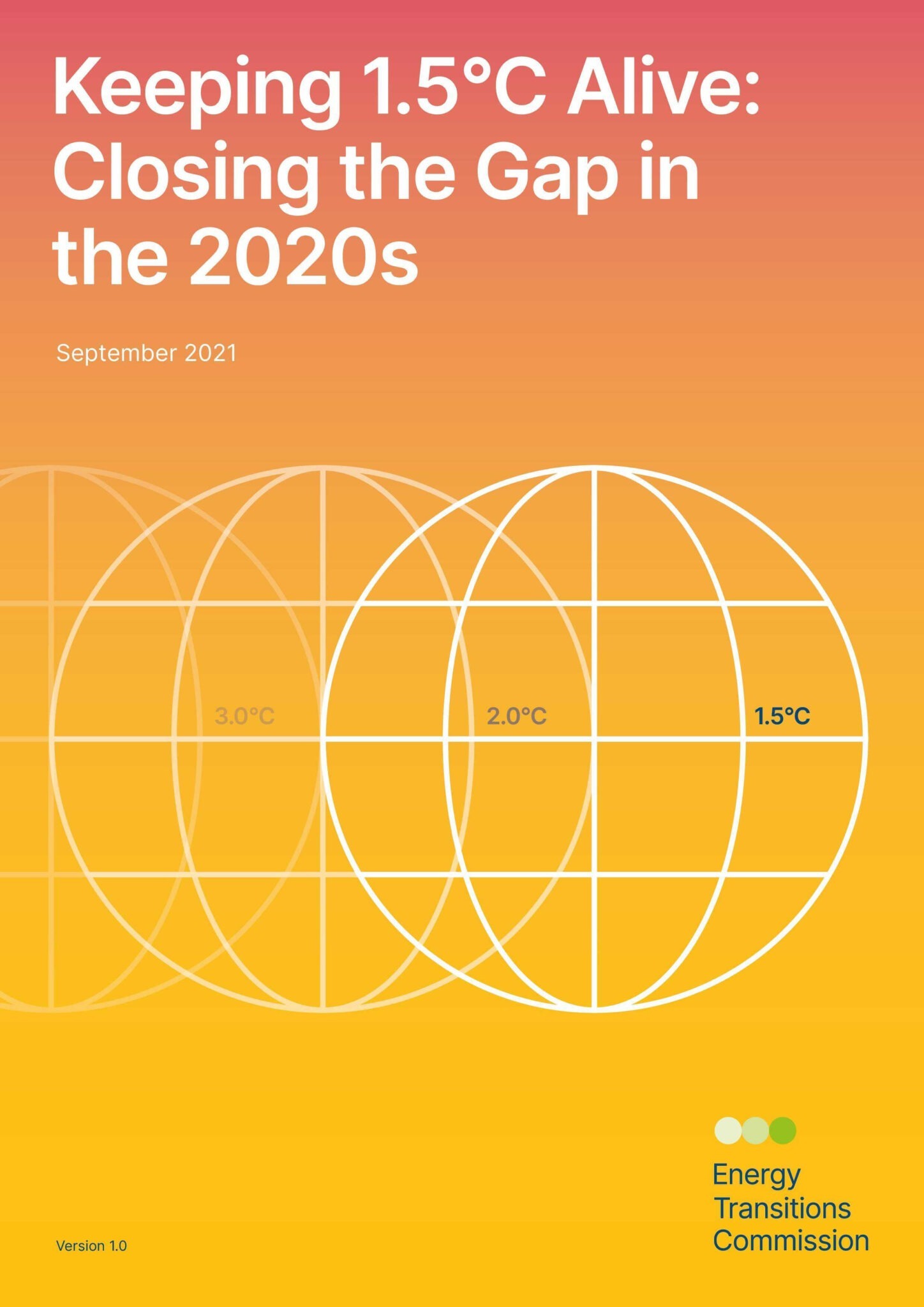COP26 President Alok Sharma welcomes the Energy Transitions Commission’s “clear and credible action plan of achievable emissions to get us on a 1.5 degree pathway”, and urges all countries to take action on coal, cars, trees and methane.
In endorsing a new report from the Energy Transitions Commission, the UK Government’s coordinator for action on net zero has urged all countries to commit to bigger emissions cuts ahead of COP26. Alok Sharma, the President of COP26, reiterated that to limiting global warming to 1.5 degrees, the world must act now to halve emissions over the next decade, and welcomed the ETC’s high-priority action plan to get on track.
The ETC sets out the key actions necessary in the 2020s to deliver the Paris Agreement and limit global warming to 1.5°C. Current national decarbonisation pledges fall dangerously short – in part, the ETC’s Chair believes, because those commitments don’t reflect how fast businesses can move in cutting emissions and moving to green energy and clean technology.
“We have the technologies to achieve far faster reductions, often at nil or low cost, and this report shows how”, explains Adair Turner. “Much of what needs to be done does not require comprehensive international agreements, but can be driven forward by coalitions of leading countries and companies. COP26 must be the catalyst to seizing this opportunity.”
What is the ETC proposing?
The six categories of action identified by the ETC are:
- Significant and rapid reductions in methane emissions. The latest report from the UN Intergovernmental Panel on Climate Change (IPCC) shows that methane emissions have accounted for around 40% of past global warming, and reducing these emissions is the most powerful lever available to limit global warming as soon as possible. But many NDCs place insufficient focus on methane. Low-cost actions could cut fossil fuel related emissions by 60% by 2030, while emissions arising from agriculture and waste management could potentially be cut by 30%.
- Halting deforestation and beginning reforestation. Halting deforestation, beginning reforestation and improving other land use practices could reduce emissions by 6.5Gt per year by 2030. Achieving this will require financial support from rich developed countries and should be a priority use of committed climate finance.
- Decarbonising the power sector and accelerating the phaseout of coal. Coal-fired electricity generation is the single biggest source of greenhouse gas emissions, but it is increasingly uneconomic against renewables. An immediate ban on the construction of new coal-fired power plants, combined with a phaseout of existing coal plants could deliver 3.5 Gt of additional emissions reductions per year by 2030. All rich developed countries should commit to total phase out by2030, and climate finance flows from developed economies should support a gradual phase out in developing countries.
- Accelerating the electrification of road transport. The shift to electric vehicles (EVs) promises to save consumers money in fuel costs and maintenance while eliminating one of the largest sources of air pollution. A ban on selling internal combustion engine light duty vehicles, instituted by 2035, would cement this shift. Commitments by major fleet operators to fully electrify their vehicle fleets at still earlier dates would be a powerful driver of change. An additional 2.3 Gt per year of emission reductions could result from such actions by 2030.
- Accelerating supply decarbonisation in buildings, heavy industry, and heavy transport. Eliminating emissions from these sectors will extend beyond 2030. But progress in technology and cost reduction is making possible faster reductions than most NDCs currently assume. Commitments by leading companies and countries in steel, cement, shipping and aviation could deliver an additional 1 Gt per year of emissions reductions, with a further 1 GT per year potentially delivered through accelerated electrification of electric heat.
- Reinvigorating energy and resource efficiency. Despite big opportunities to achieve low-cost emissions reduction via improvements in energy and resource efficiency, recent progress has been disappointingly slow. But progress could be accelerated via action at COP26, building on existing initiatives to spur efficiency improvements in buildings and appliances.


